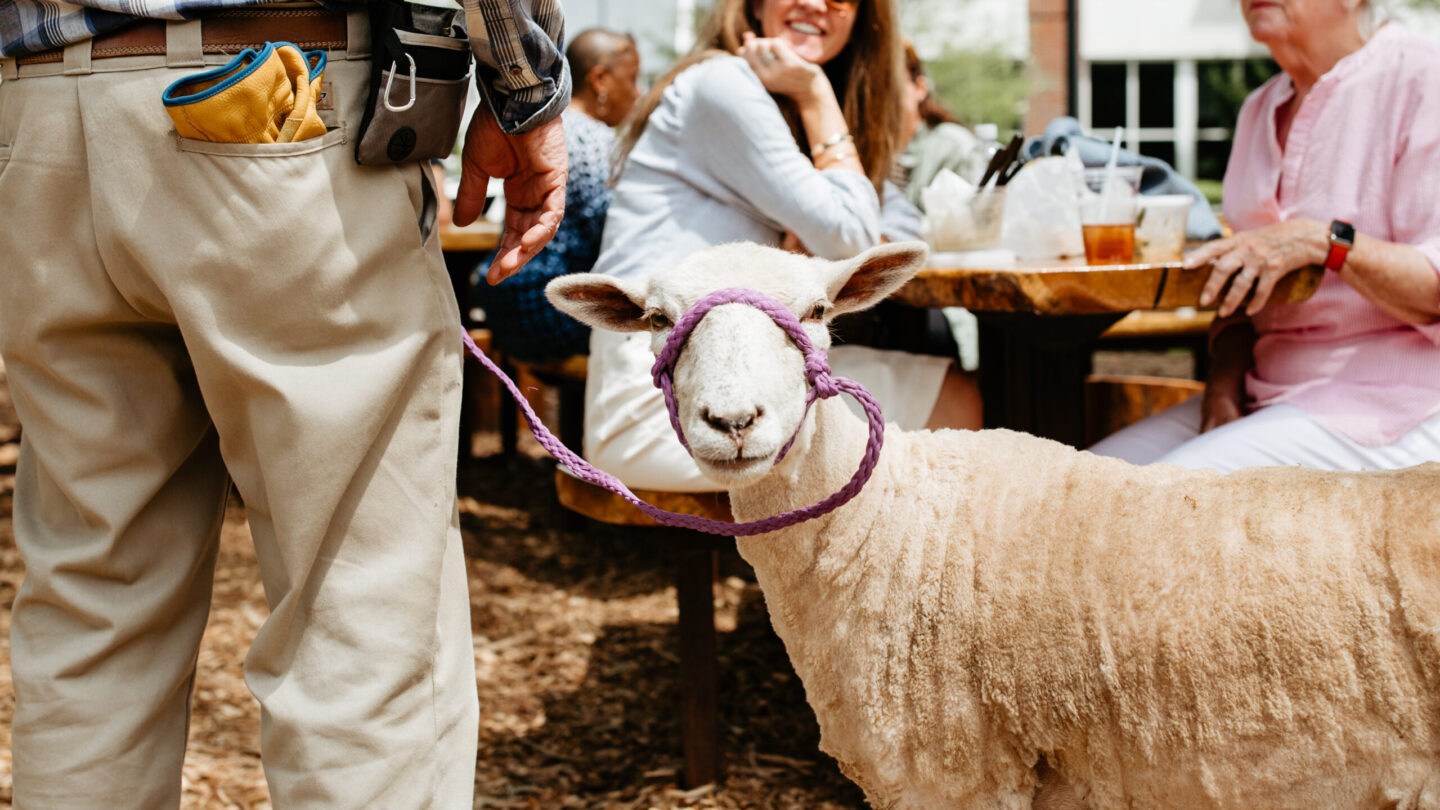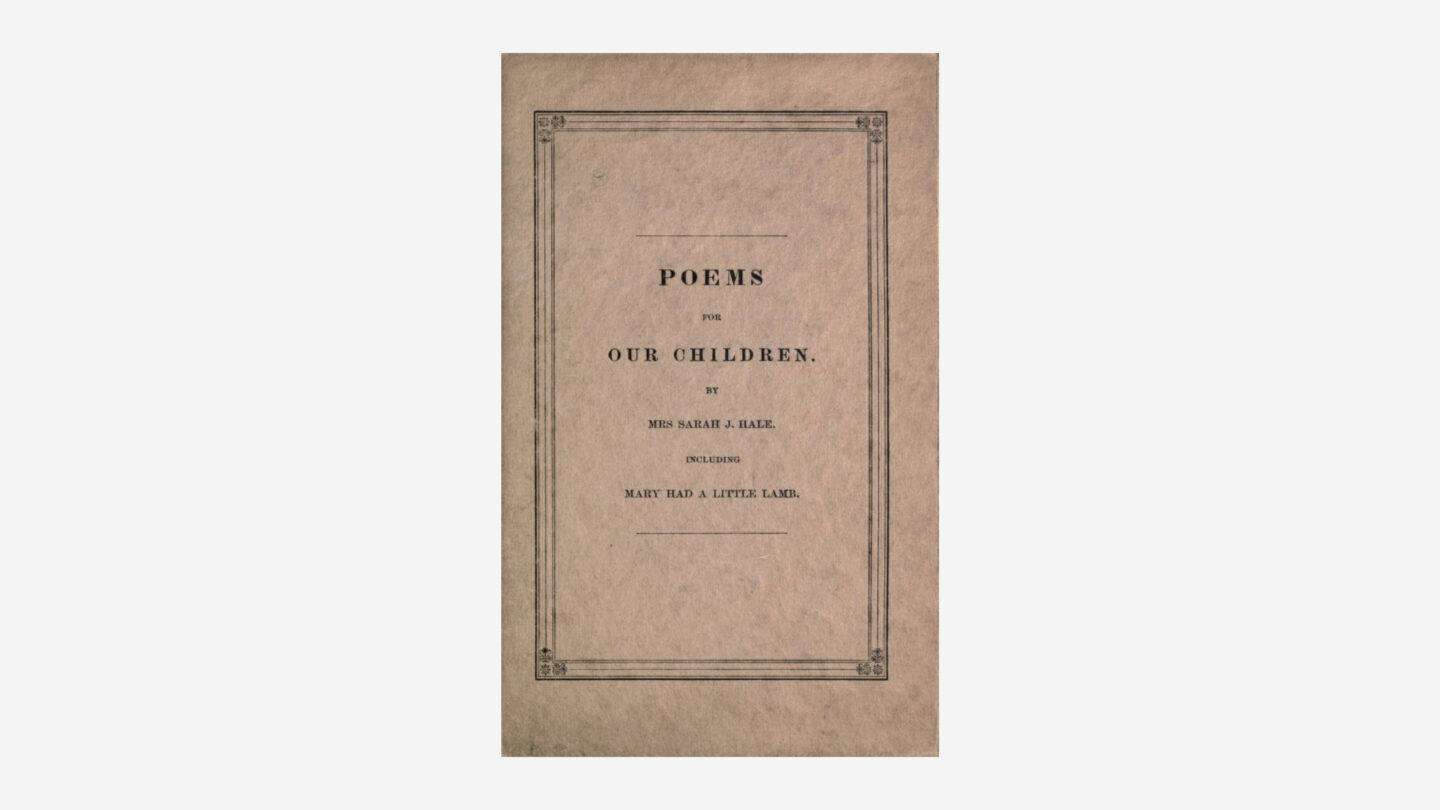
Only one of the three famous nursery rhymes featuring sheep originated in America. According to The Oxford Dictionary of Nursery Rhymes, both “Baa, Baa, Black Sheep” and “Little Bo Peep” first appeared in England, and antiquity has clouded their origins. The story is different for “Mary’s Lamb”, which first appeared in Poems for our Children, a book published in 1830 by Sarah Josepha Hale—one of the most remarkable women of the 19th century.
In 1828, Sarah Josepha Hale became editor-in-chief of The American Ladies Magazine—the first magazine for women, edited by a woman. It featured essays, fiction, and fashion illustrations. After a merger, that periodical became Godey’s Lady’s Book. Although Hale isn’t as well known in our time as she was in hers, she is still remembered for two things. One is Thanksgiving.
Sarah Josepha Hale portrait by James Reid Lambdin, 1831 (Richard’s Free Library, Newport, NH)
Hale was the most vocal and famous promoter of designating the last Thursday of November as a time for Americans to give thanks. Lincoln issued an executive order shortly after the Battle of Gettysburg, but Hale’s role in the November holiday goes deeper. While Lincoln’s proclamation made Thanksgiving official, it was simply an acknowledgment of a custom Americans had long observed.
The 1827 novel Northwood: A Tale of New England gives an early account of the tradition. A description of the ideal thanksgiving setting reads: “the roasted turkey took precedence on this occasion, being placed at the head of the table… sending forth the rich odor of its savory stuffing, and finely covered with the froth of the basting.” For dessert, the narrative continues, “the pumpkin pie occupied the most distinguished niche.” The author of Northwood? Sarah Josepha Hale. Hale played an influential role in Thanksgiving becoming a federal holiday and in how we celebrate that significant Thursday.
Hale is perhaps best known for the story of a lamb following a girl to school.
British writer and humorist E.V. Lucas opined that the stanzas of “Mary’s Lamb” are the best-known four-line verses in the English language.
In Hale’s book, the poem has three verses of eight lines, for twenty-four lines total, but most printings present it as four stanzas of four lines. That’s only sixteen lines—meaning that in many places you may read “Mary’s Lamb” as it is published, you’re not seeing a third of the original text.
On the title page of Hale’s 1830 book is an inscription declaring that the poems were “written to inculcate moral truths and virtuous sentiments.” Then in a short preface to her book, Hale addresses children warmly, telling them she “wrote this book to please and instruct you…and, I hope, induce you to love truth and goodness.” The eight lines left out in the “Mary’s Lamb” of anthologies most emphatically stress the virtue and goodness that Hale endorsed.
Here is the complete text from Poems for our Children. The often-abridged lines are in italics:
Mary had a little lamb,
Its fleece was white as snow,
And every where that Mary went
The lamb was sure to go;
He followed her to school one day—
That was against the rule,
It made the children laugh and play,
To see a lamb at school.
And so the teacher turned him out,
But still he lingered near,
And waited patiently about,
Till Mary did appear;
And then he ran to her, and laid
His head upon her arm,
As if he said—‘I’m not afraid—
You’ll keep me from all harm.’
‘What makes the lamb love Mary so?’
The eager children cry—
‘O, Mary loves the lamb, you know,’
The teacher did reply;—
‘And you each gentle animal
In confidence may bind,
And make them follow at your call,
If you are always kind’

Those eight often excised lines showcase the virtue and goodness that Sarah Josepha Hale promoted. They are also significant to understanding two critical points of the poem: sheep and most animals often reward kindness with trust; and second, the teacher makes the most of a memorable lesson on exemplary behavior by stressing its significance to the schoolchildren. It may be no surprise to learn that Hale was a teacher herself.
The heritage breed sheep and goats at Atlanta History Center often enjoy interacting with visitors during their weekly stroll across campus with Brett, our Manager of Animal Collections. Guests are always welcome to greet the animals at Smith Farm and encouraged to ask questions about our living collections.


